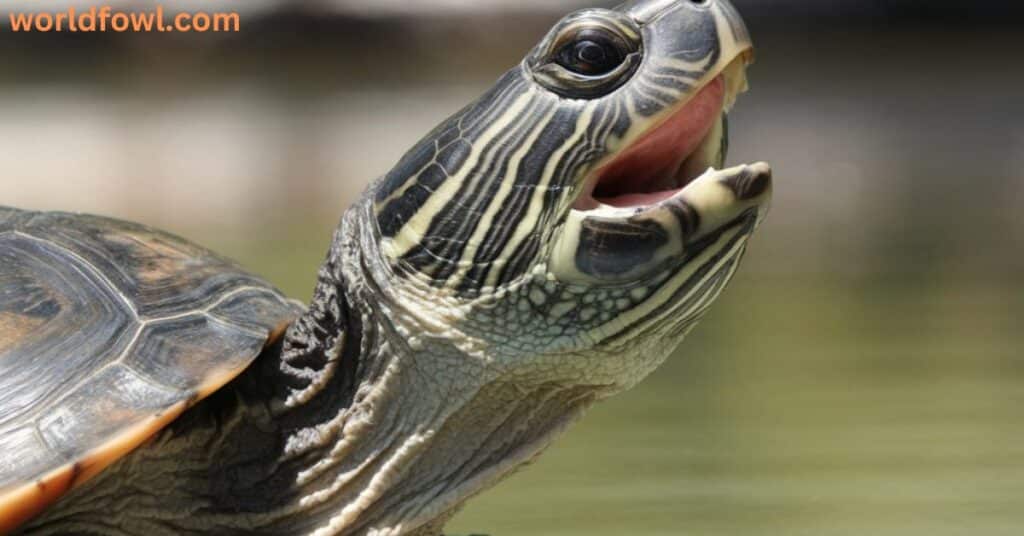Turtles are often viewed as serene, slow-moving reptiles that live quiet lives in ponds, rivers, and oceans. However, the question, “Do Turtles Attack Humans?”, often arises, especially for those who encounter them in the wild or keep them as pets. While turtles are not inherently aggressive, certain circumstances or species-specific traits can lead to unexpected bites or attacks.
This article provides a deep dive into the behavior of turtles, why they may bite, and how to avoid potentially harmful encounters. Whether you’re a curious nature enthusiast or a pet turtle owner, understanding these fascinating reptiles will help ensure safe and respectful human-turtle interactions.
What Are Turtles?
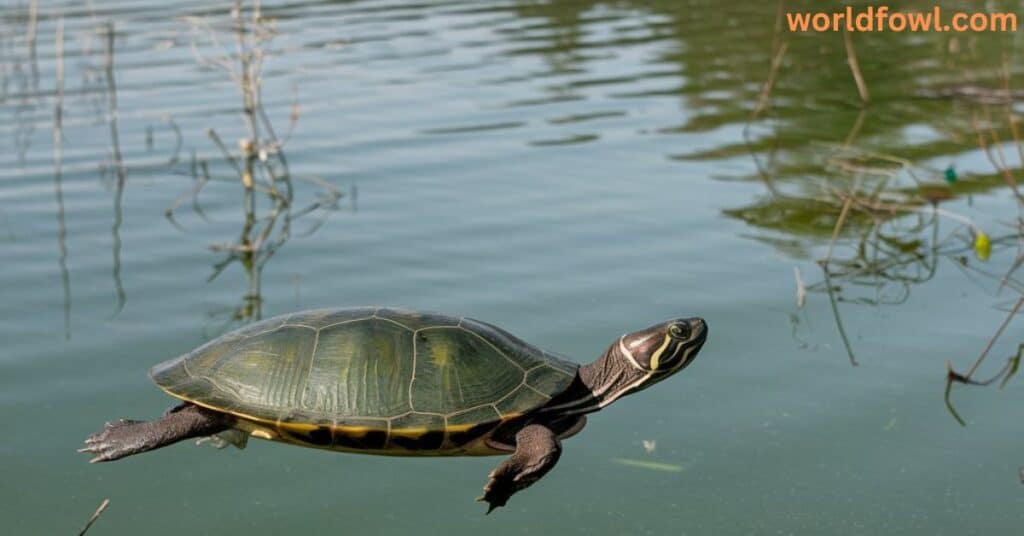
Turtles are cold-blooded reptiles that belong to the order Testudines. With over 300 species spread across the globe, turtles are incredibly diverse, ranging from tiny box turtles to massive leatherback sea turtles. They are known for their distinctive anatomy, which includes a hard shell for protection and a beak-like mouth for feeding.
Turtle Anatomy:
| Feature | Function |
| Carapace (Top Shell) | Protects vital organs from predators. |
| Plastron (Bottom Shell) | Shields the underside of the turtle. |
| Beak-Like Mouth | Used for tearing, biting, and crushing food. |
| Flippers/Legs | Adapted for swimming or walking on land. |
| Cold-Blooded System | Regulates body temperature through the environment. |
Turtles inhabit diverse ecosystems, including freshwater lakes, rivers, oceans, and deserts. Their behavior, diet, and interaction with humans vary depending on their habitat and turtle species.
See Also : Do Quolls Attack Humans? Silent Predators
Do Turtles Attack Humans?
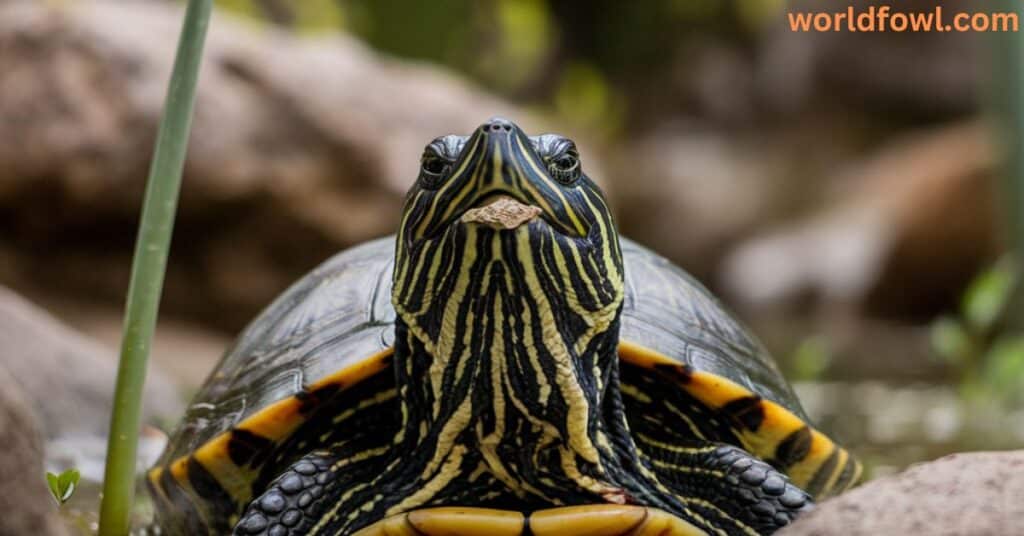
The idea of a turtle attacking a human might sound unusual, but it does happen under certain conditions. Most turtles are shy, avoiding confrontation whenever possible. However, their defensive nature can result in a bite if they feel threatened or provoked.
When Do Turtles Bite?
Turtles typically bite in the following scenarios:
- Defense Against Perceived Threats:
Turtles may interpret sudden movements or handling as a danger and react with a bite. - Territorial Behavior:
During mating season, turtles can become aggressive in protecting their territory, especially species like snapping turtles. - Mistaken Identity:
Turtles may confuse fingers or toes with food, especially during feeding. - Unintentional Provocation:
Accidentally stepping on a turtle, disturbing it while basking, or approaching it while nesting can trigger a defensive response.
See Also : Do Dingoes Attack Humans? Understanding the Risks!
Turtle Species Known for Aggression
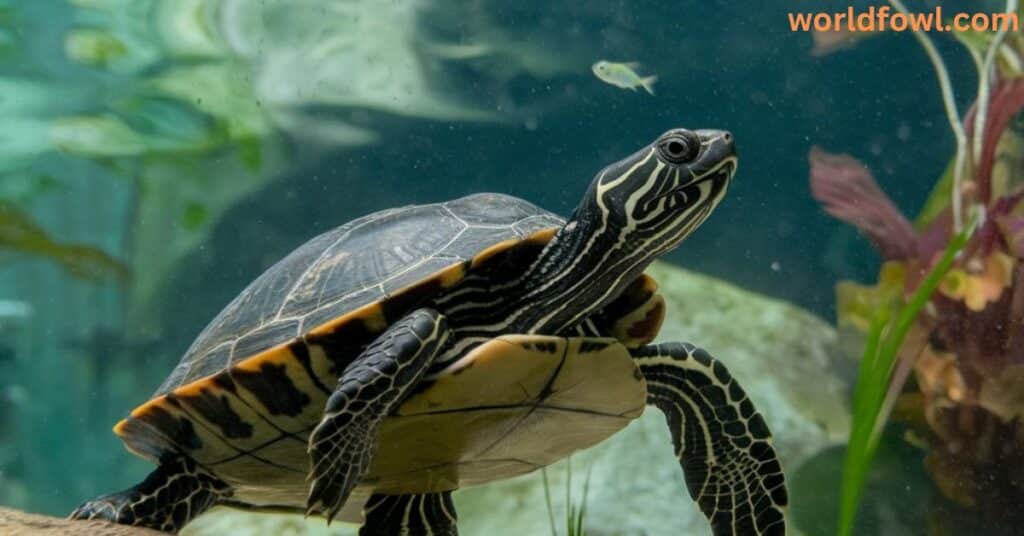
While most turtles are harmless, some species are known for their turtle aggression and stronger bite force.
Snapping Turtles
Snapping turtles are among the most aggressive and powerful turtles. Their large size, sharp beaks, and strong jaws make them capable of inflicting serious injuries.
Common Snapping Turtle (Chelydra serpentina):
- Found in North America, they are known for their territorial nature and quick defensive strikes.
- Bite force: Around 200 pounds per square inch (psi).
Alligator Snapping Turtle (Macrochelys temminckii):
- The largest freshwater turtle, weighing up to 200 pounds.
- Known for its massive jaws and a bite force exceeding 1,000 psi.
- They are ambush predators, often remaining motionless for hours.
Case Study: In 2021, a fisherman in Texas suffered a severe hand injury when he accidentally stepped on an Alligator Snapping Turtle while wading in a river. The bite required surgery to repair tendons, showcasing the potential danger of unexpected encounters.
Softshell Turtles
Softshell turtles, known for their flexible shells and fast swimming, can also be aggressive. They have sharp jaws and a defensive temperament when handled or cornered.
Sea Turtles
While generally docile, sea turtles can bite if provoked, especially during sea turtle nesting or when swimmers disturb them.
See Also : Do Bats Attack Humans? The Hidden Dangers!
Are Turtle Bites Dangerous?
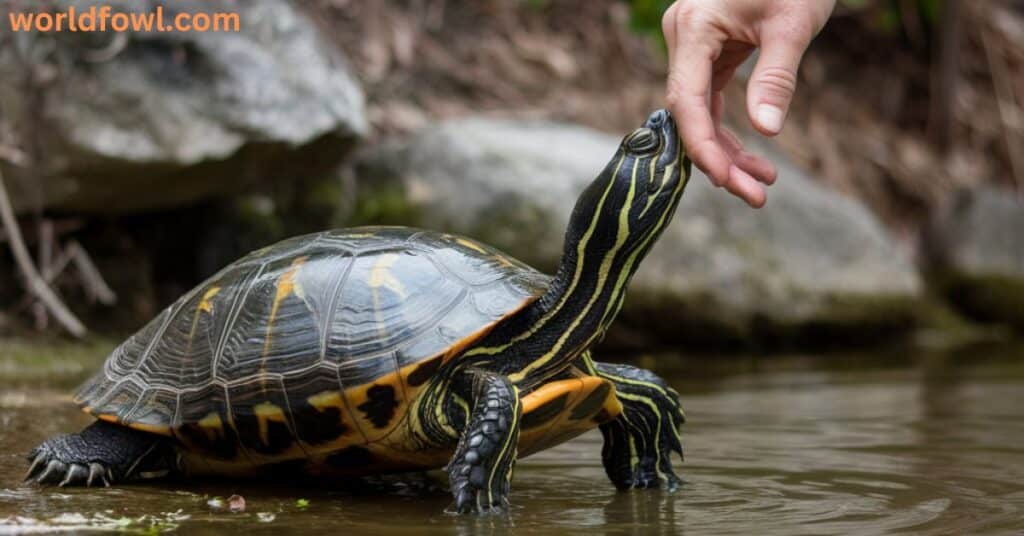
A turtle bite can range from a minor nip to a serious injury depending on the species and circumstances. While most bites are harmless, there are risks associated with certain turtles, especially large ones like snapping turtles.
Potential Dangers of Turtle Bites
- Injuries from Bite Force:
- Snapping turtles and other large species can cause deep cuts, puncture wounds, or even fractures.
- Salmonella Infection:
- Turtles naturally carry Salmonella bacteria, which can be transmitted through bites or handling.
- According to the CDC, reptiles are responsible for around 74,000 cases of Salmonella infections in the U.S. annually.
- Reptile Infections:
- Open wounds caused by turtle bites can become infected if not treated promptly.
Treating a Turtle Bite
If bitten by a turtle, follow these steps:
- Clean the Wound: Wash thoroughly with soap and water.
- Disinfect: Apply antiseptic to prevent infection.
- Seek Medical Attention: For deep bites or signs of infection, consult a doctor immediately.
How to Avoid Turtle Bites
Preventing human-turtle interaction mishaps is essential, whether in the wild or with pet turtles.
Tips for Safe Encounters in the Wild:
- Maintain a safe distance from turtles, especially nesting or basking ones.
- Avoid touching or picking up wild turtles.
- Respect their habitats, particularly during mating season or sea turtle nesting.
Safe Handling of Pet Turtles:
- Support their body securely to prevent stress or escape attempts.
- Avoid placing fingers near their mouth.
- Use feeding tools to avoid accidental bites during mealtime.
Feeding Precautions:
- Do not hand-feed turtles.
- Use long tongs or feeding sticks to keep a safe distance.
Myths and Misconceptions About Turtle Attacks
Many myths surround the idea of turtles attacking humans. Let’s debunk a few:
- Myth: Turtles actively chase humans.
- Fact: Turtles are slow and will not pursue humans. Aggression occurs only when provoked.
- Myth: Sea turtles are harmless.
- Fact: While generally docile, they may bite during nesting or if handled roughly.
- Myth: All turtles bite with the same force.
- Fact: Bite force varies by species, with snapping turtles having the strongest bites.
See Also : Do Pelicans Attack Humans? Pelicans Up Close
The Importance of Understanding Turtle Behavior

To reduce negative human-turtle interactions, it’s crucial to understand their natural instincts and behavior.
Defensive Nature
Turtles rely on their shells and biting as defense mechanisms against predators.
Territorial Behavior
Certain species, like snapping turtles, become aggressive when their territory is invaded, especially during mating season.
Basking Behavior
Turtles bask in the sun to regulate their body temperature. Disturbing them during this vulnerable time can provoke a defensive response.
Quote: “Turtles are not aggressive by nature; they are simply misunderstood. By respecting their boundaries, we can coexist peacefully.” – Dr. Jane Reynolds, Herpetologist
FAQs: Do Turtles Attack Humans
Can a sea turtle attack a human?
Yes, though rare. Sea turtles may bite during nesting or if swimmers get too close.
Are snapping turtles more dangerous than other turtles?
Yes, their strong jaws and territorial nature make them more likely to bite.
How do you know if a turtle is about to bite?
Signs include hissing, retracting their head, or lunging forward.
What should you do if you find a turtle in your backyard?
Leave it alone or guide it to safety using proper turtle handling safety techniques.
Can pet turtles bite their owners?
Yes, especially if they feel threatened or mistake fingers for food.
Conclusion: Do Turtles Attack Humans?
While turtles are not naturally aggressive, bites can occur under specific circumstances. Understanding their behavior, respecting their space, and following proper handling techniques can prevent most incidents. Whether encountering a snapping turtle in the wild or caring for a pet, knowledge and caution are key to peaceful human-turtle interaction. { Do Turtles Attack Humans }
By fostering respect for these ancient reptiles, we can enjoy their presence in nature without harm to either humans or turtles.

Henry James is a seasoned blogger and a passionate storyteller on “World Fowl.” With years of experience crafting engaging content, he brings a unique blend of expertise and creativity to his writing. Henry specializes in exploring diverse topics with depth and clarity, captivating readers worldwide.

